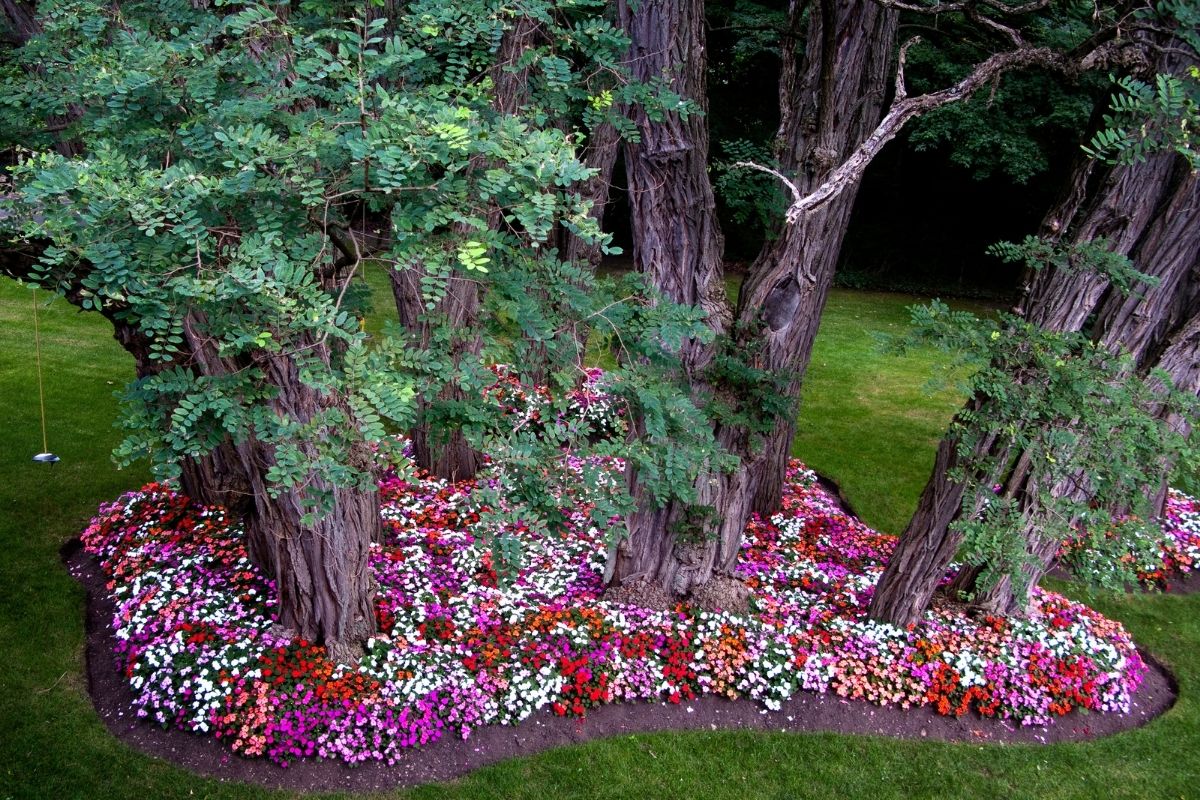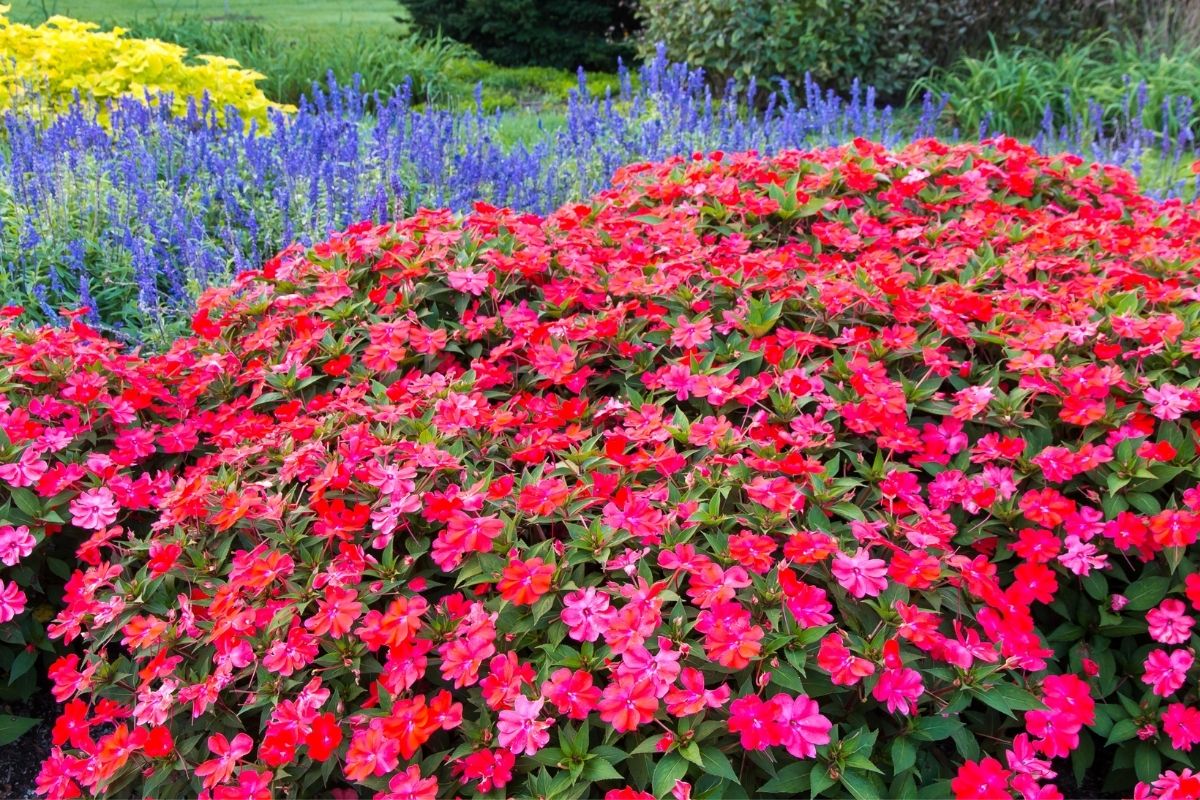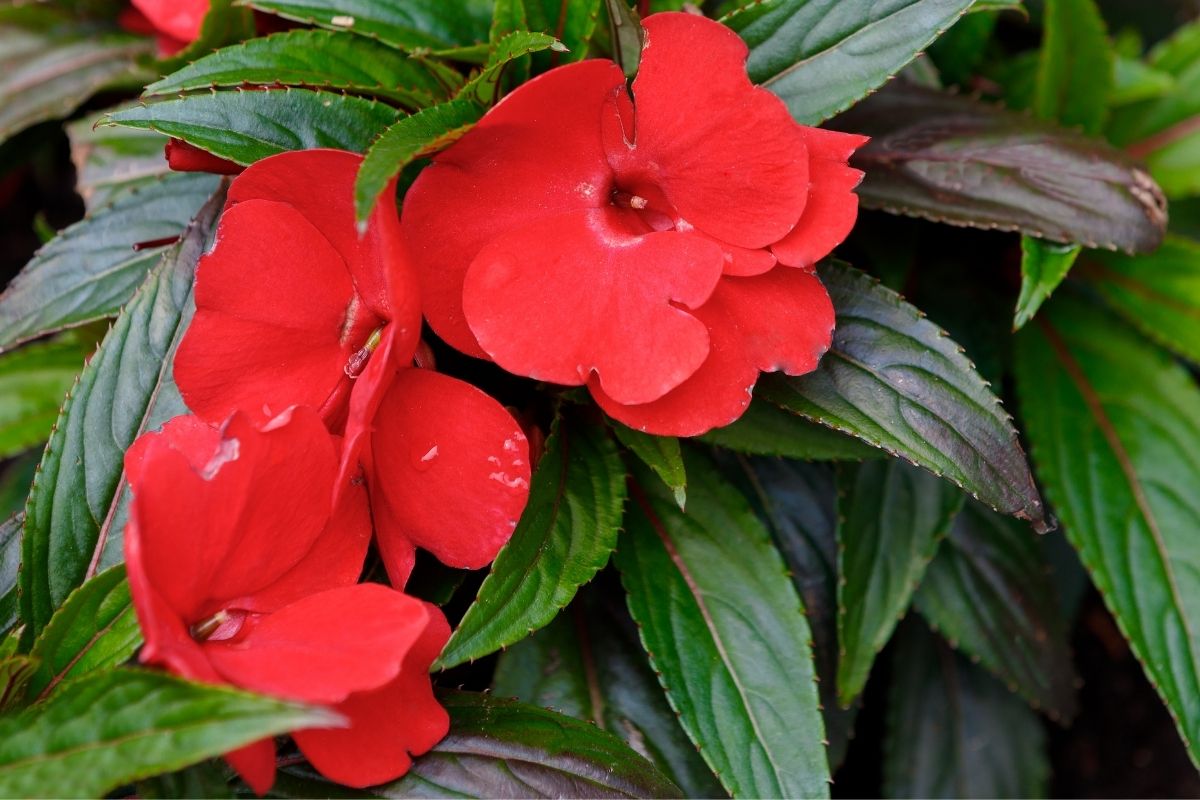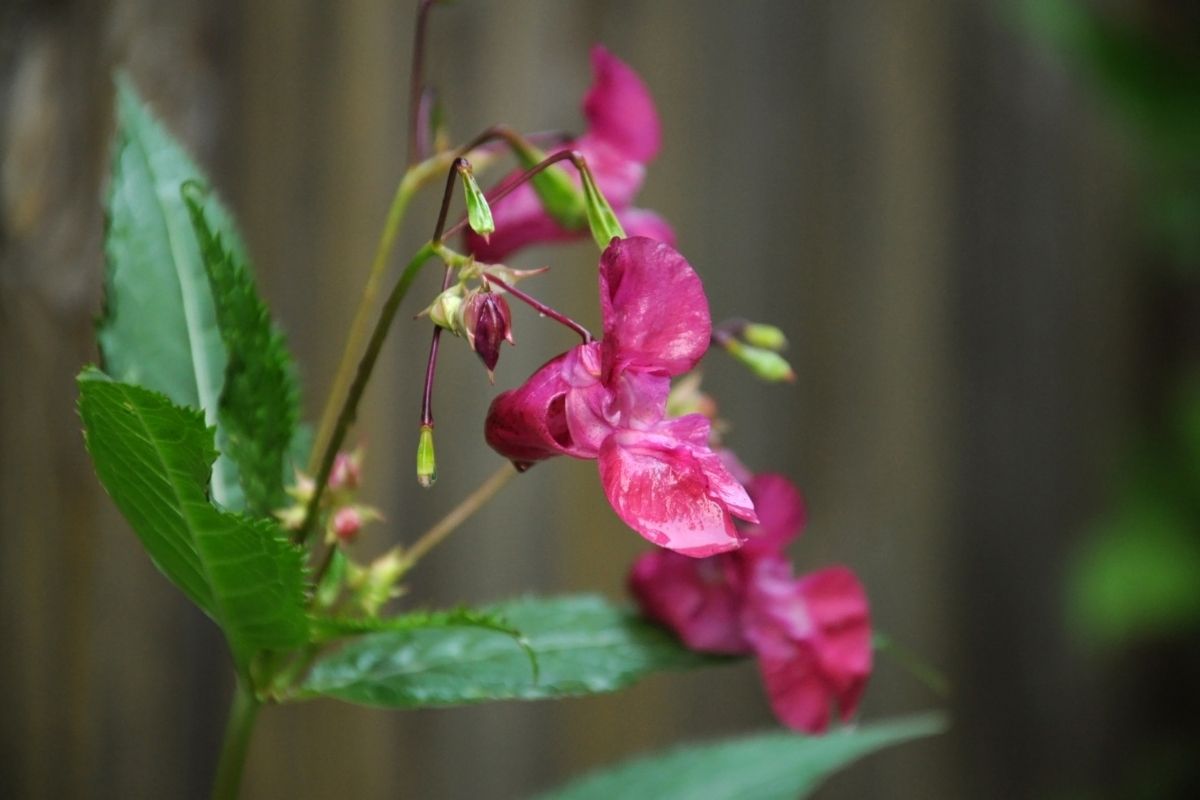Today, there are over 1000 distinct types of impatiens, each with its own growth and flowering patterns. Different Types Of Impatiens also have different benefits as some can even be used to heal inflammation and rashes, whilst others are beautiful to look at.
What Are Impatiens?
The name impatiens comes from the Latin word impatiens, which means “impatient”.
This is due to the fact that their mature seed pods will frequently burst open even with the slightest touch, as though they are impatient to open.

Impatiens are technically perennial which means that they live longer than three years, but they are usually planted as annuals with their whole life cycle being completed in one season.
In regard to this, impatiens are known to die after the first frost of the year and will only function as perennials if the temperature is warm enough.
They are widely used as a bedding plant because they have magnificent, high-impact colors in pink, orange, white, and brilliant red.
Their vibrant colors attract butterflies and look great in hanging baskets, borders, pots, and in clusters throughout the yard.
There are many species of impatiens that you can choose from that differ not in appearance but patterns and needs as well which is why it is good to do that extra bit of research before deciding on what species to get.
This will help you have a much better idea of what to expect, and your impatiens will thrive in no time.
1. Traditional Impatiens

Also known as bedding impatiens, traditional impatiens are the easiest to grow and produce the greatest results.
Traditional impatiens have a lot to offer, such as long-lasting blossoms, beautifully colored flowers, and tolerance to shade.
This plant, which is native to Africa, has long been one of the most popular bedding plants in North America, particularly in gloomy areas.
They’re also popular in hanging baskets, window boxes, and other types of container gardening.
However, as previously said, it is extremely vulnerable to downy mildew. Infected plants, such as impatiens, are commonly used to introduce them into a garden.
Infected impatiens leaves will turn yellow and eventually die and fall off. You can tell when these impatiens have the illness when you notice a white flour-like residue on the underside of
.
How To Plant
Traditional impatiens germinate swiftly when seeds are planted into trays of premium seed-raising mix or punnets of professionally developed seedlings.
Plants should be spaced around 25–30 cm apart in the garden for a carpet look, with about 30 cm between rows.
Choose a well-lit location that will be shielded from the hot afternoon heat for best blossoming. A lot of shadows should be avoided as it can be very detrimental to their growth.
Impatiens require deep, well-draining soil, although they will also thrive in light sandy soil.
Avoid thick clay that retains moisture for an extended length of time after watering or raining—root rot can be a problem in damp soils.
2. New Guinea Impatiens

Long-blooming New Guinea impatiens are a great choice for filling that warm spot in your yard.
New Guinea impatiens grow tiny clumps and keep their numerous blooms above their leaves, creating a vibrant show.
These quick growers will begin to bloom early in the season if planted immediately after the final threat of frost has passed.
New Guinea impatiens are low-maintenance plants with minimal issues with pests and diseases.
Because of the leaves, you can easily recognize the kind of impatiens as new guineas.
Their appearance appears to some to be more “tropical”, so if you’re planting a themed area that you want to look tropical, they may be worth considering.
The only downside of New Guinea impatiens is that they have limited tolerance for drought, and it doesn’t take long for them to begin drooping if they become dry.
In fact, if they are planted in pots, you may need to water them daily during hot, dry weather.
However, even if they get dry and droopy, watering them will rapidly restore them back to life which can be applied to all impatiens.
How To Plant
The important thing to understand about New Guinea impatiens is that, while it can handle moderate quantities of sunlight, it flourishes in the mild shade.
These plants thrive in flower gardens on the east side of a building, which receives early sunlight and afternoon shade.
For the best results, fill the beds with mass plants. Each plant forms a circular mound, and if planted 18 inches apart, it will occupy the whole space in a matter of weeks.
To prevent front branches from sprouting into the grass or sidewalk, keep the plants in the front of the bed 12 inches away from the edging.
3. Sunpatiens

This impatiens appears quite similar to the New Guinea species of impatiens, with similar leaves and the typical blossom of any impatiens plant.
However, there are three primary characteristics of the plant that set it apart from the others.
They are resistant to downy mildew and are very versatile as they can grow both in the shade or the sun.
Having said this though you should keep in mind that they do best in full sun as they will produce more flowers and if they get access to at least four hours of direct sunlight a day, their growth will not be affected.
Another great thing about sunpatiens is that they need very little to no care in order to grow, and it is even said that any trimming or cutting is not needed and can make them look less attractive.
How To Plant
Because of their size, sunpatiens are ideal for beds and patios. Planting tall plants 12 inches apart is a good way to get them to grow tall.
Place them wider apart, roughly two feet apart, and you’ll have shorter sunpatiens.
You should also loosen the already well-drained and wet soil and apply a slow-release fertilizer to assist the plants before planting in late spring.
When deciding on a location, choose one that will receive sunlight for more than half a day.
4. Himalayan Balsam

Himalayan Balsam grows in dense clumps and generates a root mat. It has reddish stalks that may grow up to two meters in height.
Its pink blooms are fashioned like helmets, and the seed pods explode when lightly touched.
All the seedlings, young branches, leaves, and flowers are eaten with caution. Himalayan Balsam includes a high concentration of minerals and should not be eaten in large quantities.
Furthermore, it includes calcium oxalate, which is toxic in large quantities in its raw form. Cooking, on the other hand, fully breaks this down. The seeds have a nice nutty feel and may be eaten raw or roasted.
How To Plant
In England and Wales, Himalayan balsam is classified on Schedule 9 of the Wildlife and Countryside Act.
It is thus illegal to plant or otherwise induce it to flourish in the wild. It is not illegal to plant Himalayan balsam in gardens, but it must not be let to escape into the wild.
However, because it spreads so quickly, it is nearly hard to keep it from spreading outside your garden. As a result, we do not suggest Himalayan balsam as a garden plant.
5. Orange Jewelweed

Orange Jewelweed is a native North American annual plant. It is related to garden-variety impatiens in that it does not like to dry up and is frequently seen growing in ditches, near streams, and in bottomland woods.
Jewelweed is a traditional cure for a variety of skin ailments, most notably poison ivy rash. The sooner it is used, the better it will function.
Fortunately, where poison ivy thrives, jewelweed is typically nearby. After coming into touch with poison ivy, jewelweed leaves can be mashed and used as a poultice, which frequently prevents the rash entirely.
Crushed leaves can also be used to make tea, which can then be frozen into ice cubes and applied to the skin as needed.
How To Plant
Choose a spot in full or partial shade with rich, organic soil that keeps moist for the most part. Jewelweed tolerates more light in areas with chilly summers.
Before planting, dig in a thick layer of compost or rotten manure if the soil is deficient in organic matter.
Jewelweed seeds grow best when kept in the refrigerator for at least two months before planting them outside. When all risk of frost has gone, scatter the seeds across the soil’s surface.
Because they require sunshine to sprout, do not bury or cover the seeds with dirt. When the seedlings emerge, thin them to six to eight inches apart by removing extra seedlings with scissors.
Summary
Due to the fact that there are thousands of different kinds of impatiens out there, it can be tricky to know what to look for when thinking of a new addition to the yard as there are even subtypes to every type of impatiens that have been mentioned in this guide.
They are easy to grow, maintain, and lovely to look at which is why they are a very popular sight to see in yards all over the world.
Impatiens come in a large range of colors, shapes, and uses that allow you to get the particular variation that works best for you.







